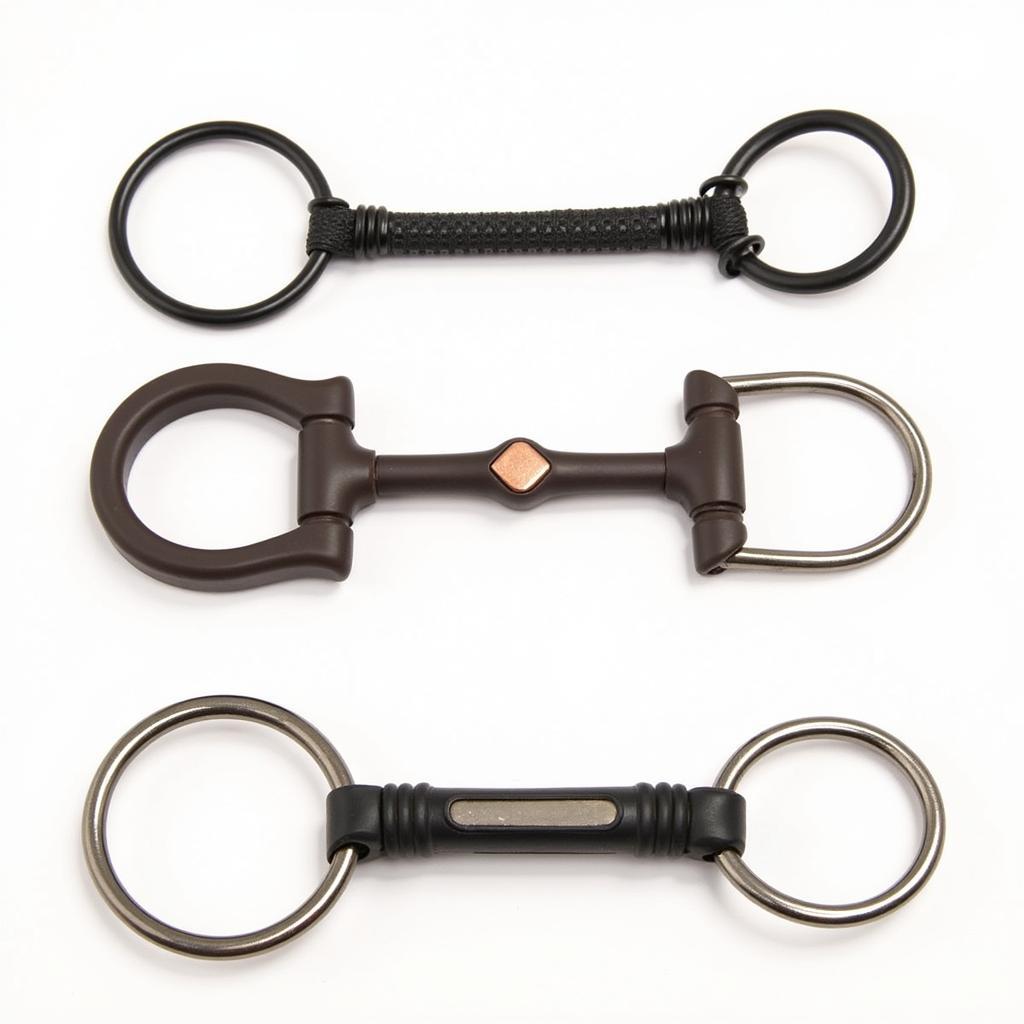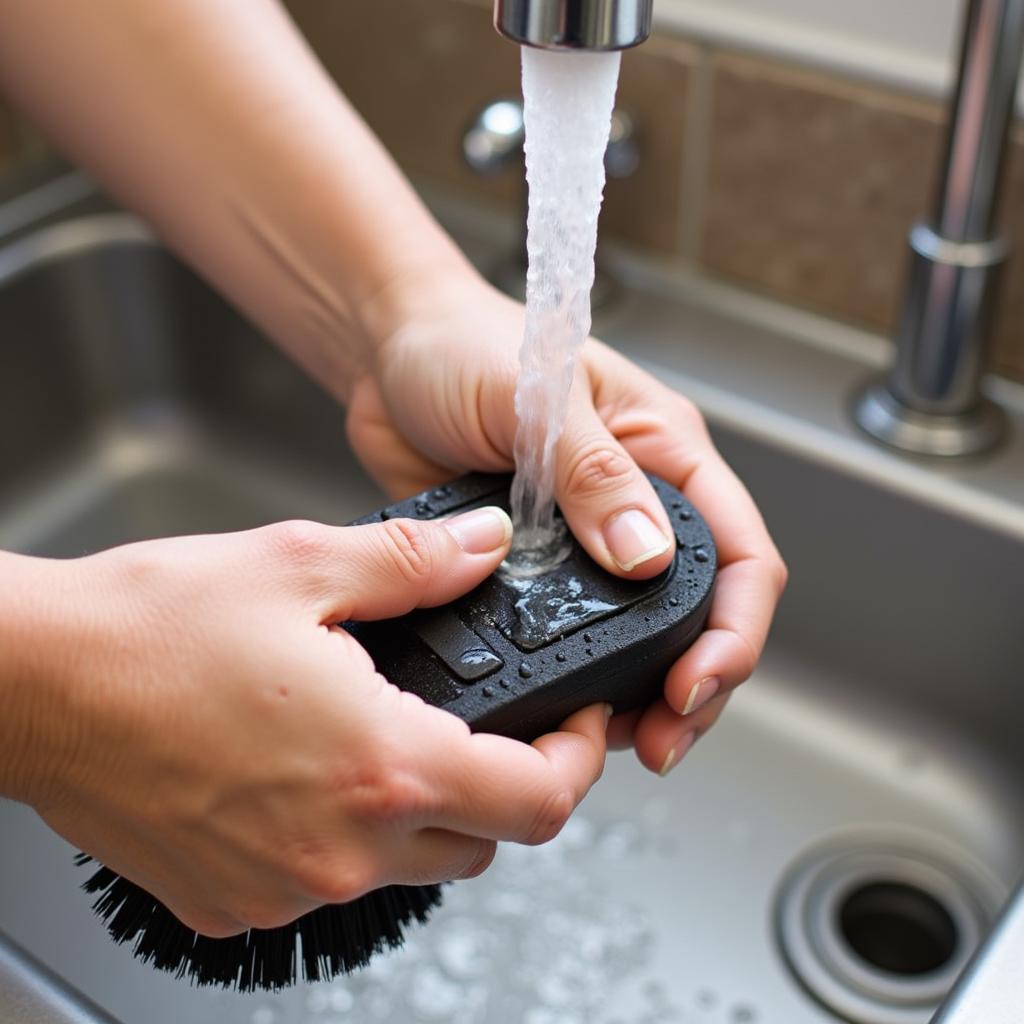A Rubber Horse Bit is a type of bit made from, you guessed it, rubber! It’s a popular choice among horse owners and riders for several reasons, often praised for being gentler on a horse’s mouth compared to metal bits. But are rubber bits right for every horse? Let’s delve into the world of rubber horse bits, exploring their pros and cons, common types, and how to choose the right one for your equine partner.
Why Choose a Rubber Horse Bit?
Rubber bits are often the go-to choice for horses transitioning from a bitless bridle or for those with sensitive mouths. The softer material offers a more forgiving feel against the horse’s bars, tongue, and lips, potentially reducing the pressure points associated with some metal bits.
 Types of Rubber Horse Bits
Types of Rubber Horse Bits
Furthermore, rubber bits are less likely to get cold in winter, making them a more comfortable choice for your horse during colder months. They are also generally more affordable than their metal counterparts, making them an attractive option for budget-conscious horse owners.
Exploring Types of Rubber Horse Bits
Rubber horse bits aren’t one-size-fits-all. Just like with metal bits, they come in various designs to suit different horses and riding styles.
Common Rubber Bit Mouthpieces:
- Solid Rubber: The most basic type, offering a consistent feel across the entire mouthpiece.
- Rubber-Covered: These bits have a metal core encased in rubber, offering a blend of stability and softness.
- Rubber with Ports: Similar to ported metal bits, these have raised sections in the mouthpiece to provide tongue relief and allow for more precise communication.
- Rubber with Flavors: Yes, you read that right! Some rubber bits are infused with flavors like apple or molasses to encourage chewing and acceptance of the bit.
Common Rubber Bit Cheekpiece Styles:
- Snaffle Bits: These are the most common type of bit, operating on direct pressure. They are a good starting point for young horses or those new to bitted riding.
- Curb Bits: Curb bits have shanks that create leverage, making them more powerful than snaffles. They are typically used in Western riding or for horses that require more control.
“When introducing a rubber bit, it’s crucial to observe your horse’s response closely. Look for signs of relaxation and acceptance, such as licking and chewing,” advises renowned equine behaviorist Dr. Emily Carter.
Choosing the Right Rubber Horse Bit: Factors to Consider
Selecting the appropriate rubber horse bit for your horse depends on various factors, including:
- Horse’s Age and Experience: A young or inexperienced horse will likely benefit from a simple, straightforward bit like a solid rubber snaffle.
- Sensitivity: If your horse has a sensitive mouth, a thicker rubber bit or one with a ported mouthpiece may be more comfortable.
- Riding Discipline: Different riding disciplines often favor specific bit styles. For instance, a curb bit might be more suitable for Western riding than a snaffle.
- Horse’s Mouth Conformation: The shape and size of your horse’s mouth play a role in bit selection. A horse with a low palate might require a bit with a thinner mouthpiece.
 Horse Fitted with a Rubber Bit
Horse Fitted with a Rubber Bit
Remember, finding the perfect bit for your horse often involves trial and error. Consulting with a qualified equine professional, such as a veterinarian or experienced trainer, can provide valuable guidance in choosing the most appropriate bit for your horse’s individual needs.
Rubber Horse Bit Care and Maintenance
Proper care and maintenance are crucial for ensuring the longevity of your rubber horse bit and the health of your horse.
- Cleaning: Rinse your rubber bit thoroughly with clean water after each ride, removing any dirt, debris, or saliva buildup.
- Disinfecting: Regularly disinfect your rubber bit with a mild, horse-safe disinfectant to prevent the growth of bacteria.
- Inspection: Inspect your rubber bit regularly for any signs of wear and tear, such as cracks, chips, or discoloration. Replace the bit immediately if you notice any damage.
 Properly Cleaning a Rubber Horse Bit
Properly Cleaning a Rubber Horse Bit
Rubber Horse Bits: Not a Universal Solution
While rubber horse bits can be an excellent option for many horses, it’s essential to remember that they are not a cure-all for every training or behavioral issue.
If you are experiencing problems with your horse’s bitting, it is crucial to consult with a qualified equine professional to rule out any underlying dental issues, pain, or training-related concerns.
Rubber Horse Bits: A Humane Choice for Your Equine Partner
Choosing the right equipment plays a vital role in ensuring your horse’s comfort and well-being. Rubber horse bits, when selected and used appropriately, can be a humane and effective tool for communication and control while riding. Remember, always prioritize your horse’s comfort and individual needs when making any decisions about their tack and equipment.
For further insights into caring for your equine companion, explore our articles on draft horse bits and grazing muzzle for horse.
Need assistance in finding the perfect rubber horse bit for your horse? Contact us at Phone Number: 0772127271, Email: [email protected] Or visit us at: QGM2+WX2, Vị Trung, Vị Thuỷ, Hậu Giang, Việt Nam. Our dedicated customer support team is available 24/7 to assist you.